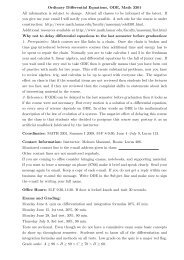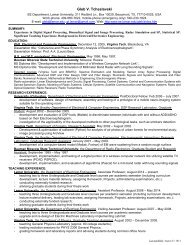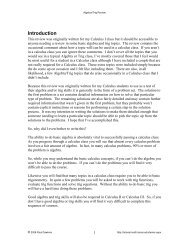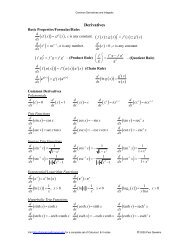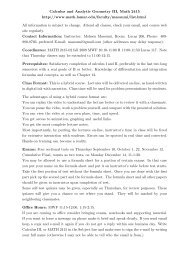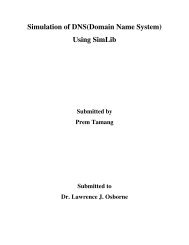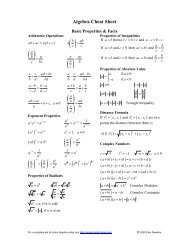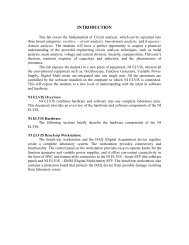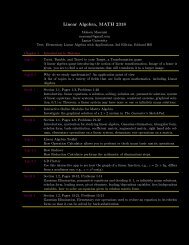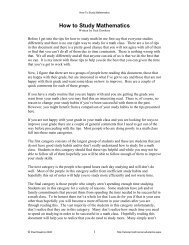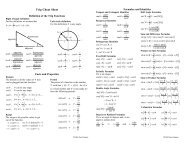program self-study report - Lamar University Electrical Engineering
program self-study report - Lamar University Electrical Engineering
program self-study report - Lamar University Electrical Engineering
You also want an ePaper? Increase the reach of your titles
YUMPU automatically turns print PDFs into web optimized ePapers that Google loves.
and (2) project execution, culminating in a formal engineering <strong>report</strong>, oral presentation, posters anddemonstration. Students are required to establish teams, elect a team leader, research their topic, definethe project objectives and specifications, write a formal engineering proposal, design the hardware andsoftware, build appropriate schedules and budgets, manage a project through hardware implementation,testing and project closeout. The course is designed to teach technical ideating and project defining, workbreakdown structuring, establishment and execution of appropriate concept feasibility studies and breadboarding,formal engineering proposal writing and obtaining project approval. Scheduling and budgetingare included in the proposal, project execution and management. This experience incorporates engineeringstandards since the project must include a hardware product and realistic constraints are imposed throughattention to budgeting and the EE Content rule.In 2002 the faculty developed what we call the EE Content rule that is applied to projects proposed bystudents taking our projects course. It must be emphasized that the students select their own project;however, the department provides a suggested list of project ideas on the department website to assiststudent teams in developing projects, but a project is never forced on a team. The EE Content rule speaksto the outcome of the project and also refers to the technical level of a project. Many students are unclearas to what a senior project entails and think that it might be not far removed from what might be producedfor a science fair. Although many science fair projects meet a fair assessment as engineering endeavors,they rarely include the level of project management and design that go into a senior project. EE Contentof a project proposal is determined by the faculty and basically says that the design of the project is suchthat one would not expect a student in a discipline other than EE to be able to produce the project. This isa subjective assessment by the faculty and the course instructor, but it guarantees that the projectproduced by the team will have essential elements that are possible only as a culminating experience ofour curriculum.In 2003 the concept of Value Added <strong>Electrical</strong> <strong>Engineering</strong> (VAEE) was added to the curriculum and theengineering component as an outcome of a Texas Workforce Development project and an equipment giftfrom National Instruments that allowed us to update our circuits and electronics labs with ElectronicLaboratory Virtual Instrumentation Suite (ELVIS) systems, see Figure 4.2.Figure 4.2 National Instruments ELVISOne of the basic concepts germane to the ELVIS system is the removable prototyping board shown twicein Figure 4.2. One is standing on edge at the far left and the other is mounted to the top of the console unit(box in center with control panel). The student is expected to purchase this board and then use it for labwork involving the ELVIS; in fact, the board is fitted with holes so that it can be inserted into a 3-ringbinder for easy transport and storage. Unfortunately, the board is too expensive for most students andmany <strong>program</strong>s simply purchase a board for each ELVIS console unit and leave them installed. Studentlab groups then share them.EE Program Self-Study Report-2006 28




